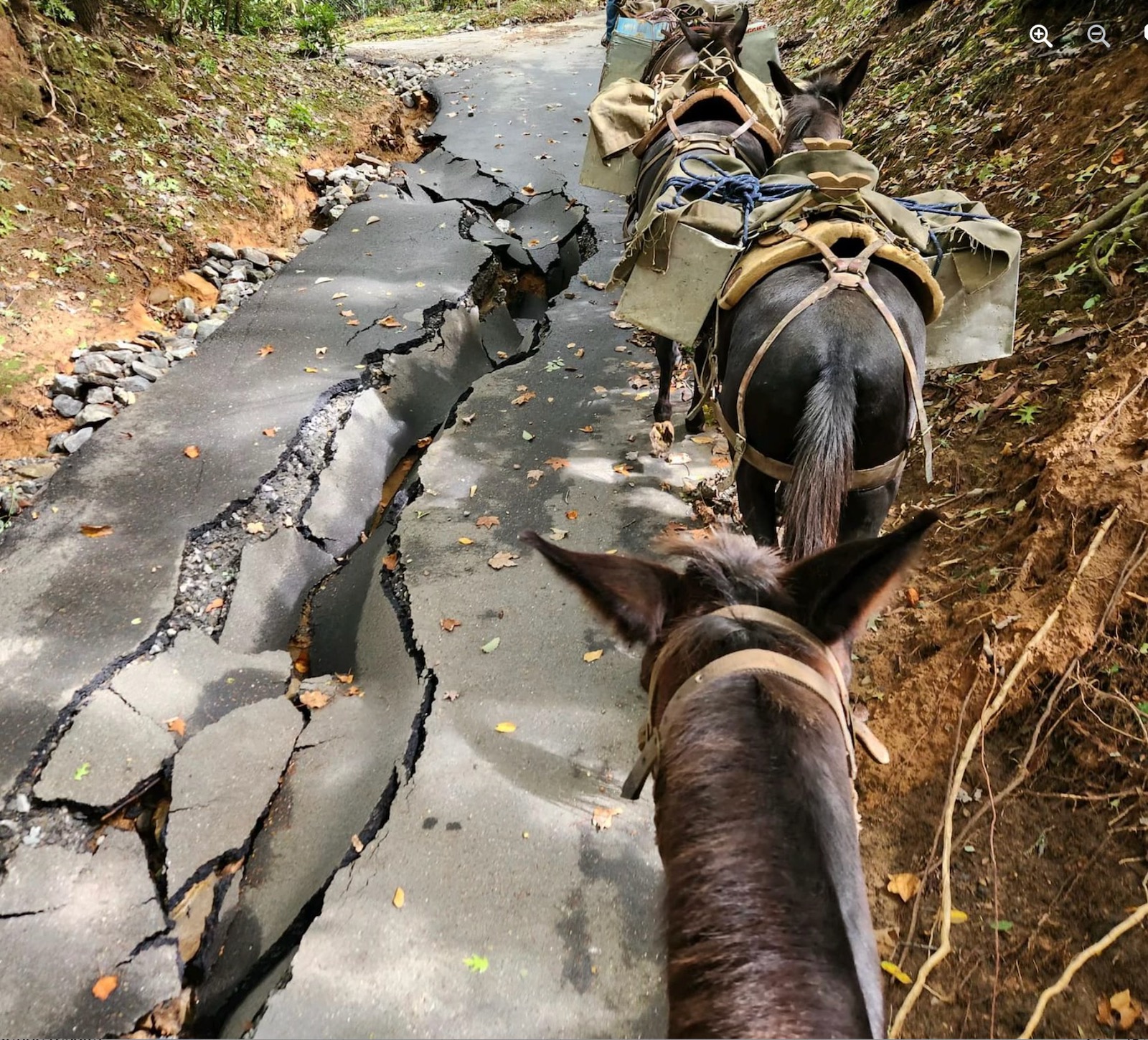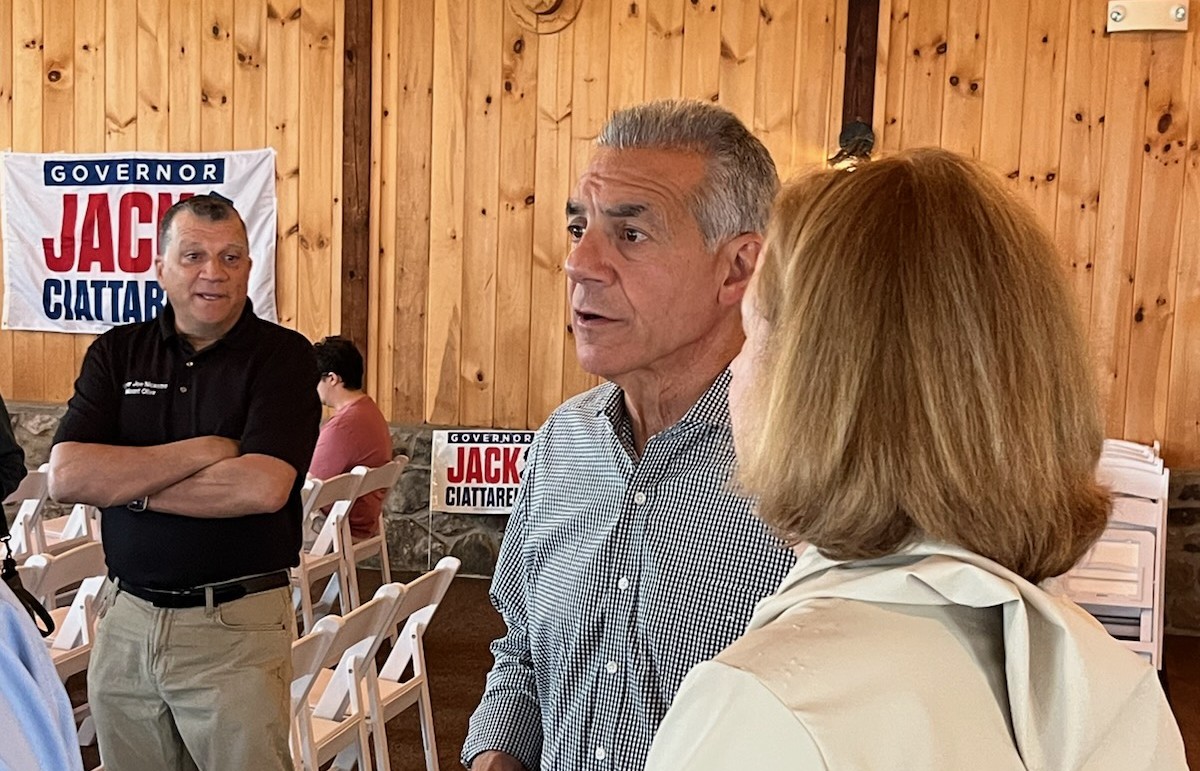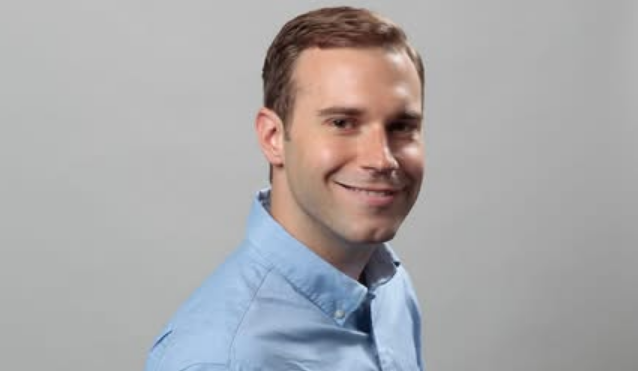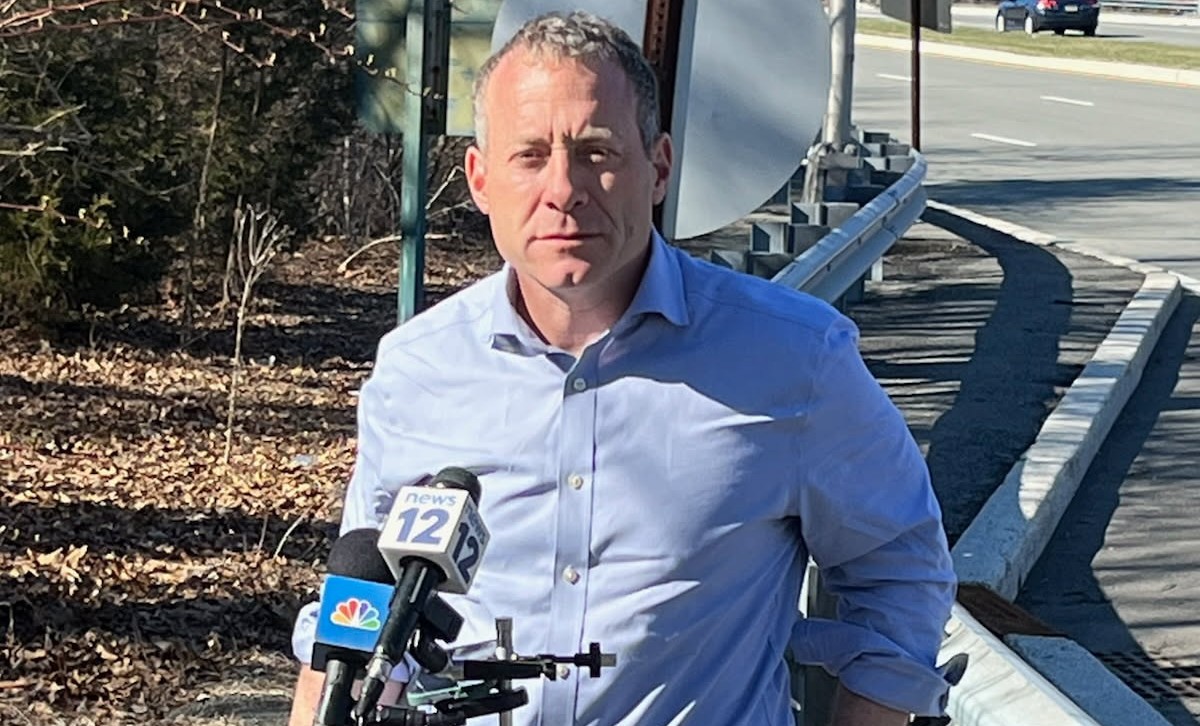
It’s been well over a week since Hurricane Helene blasted Florida’s Gulf Coast and continued up through the southeast United States cutting a path of death and destruction through Georgia, South Carolina, North Carolina, Tennessee, Virginia and Kentucky.
By the end of last week, 227 bodies were found, making it the second deadliest hurricane since Katrina almost 20 years ago. Like all turbo-charged natural disasters in our climate crisis era, it was the poor living in the hollows of places like North Carolina’s Blue Ridge Mountains who were most vulnerable. Close to half of Helene’s victims were from North Carolina. They are still looking for bodies.
Along the way, the category 4 killer hurricane tore up basic life sustaining utilities like power and water as well as essential cell phone, wi-fi and cable over a massive swath of several states.
As is so often the case, in the age of cell and internet communications in the face of something like Helene when your life could depend on communication, these relatively expensive platforms collapse entirely.
You are left in the dark without a clue.
Whether it be a massive forest fire, a tidal surge of tsunami proportions or a deadly cloud of vinyl chloride released after a train derailment, it’s your situational awareness that will determine if you and your family survive. Even in the days and weeks that follow credible and reliable information is critical to individual and community well-being.
Yet, as we are seeing in the aftermath of Hurricane Helene, the dearth of authenticated local TV, radio and newspaper reporting, due to the Clinton-era de-regulation and sector consolidation, storm victims are prey to unauthenticated social media memes easily manipulated by bad faith political actors and even foreign governments.
In the place of authenticated news and information we have aggregated social media content directed to use by algorithms based on our past consumer choices, zip codes and political affiliations. Is it any wonder we still can’t agree on who won the last election, if we should wear a mask amidst a raging pandemic or head out of town after an evacuation order is given?
Across the nation, formerly locally owned radio stations are broadcast cogs in vast national enterprises that squeeze operations for greater profits by laying off reporters and automating master control which pipes through the weather from somewhere else.
This news void is filled with unauthenticated social media. With just a month to go before the post consequential national election since the Civil War, the New York Times reported that former President Trump “falsely accused the Biden administration of spending disaster funding on migrants, neglecting areas that voted for Republicans and ignoring a call from a Republican governor.”
These spurious claims get traction across free access platforms while the most professional contextualized reporting is usually kept behind a paywall.
Somehow, almost 100 years since the passage of the 1934 Federal Communications Act, we’ve let slide the notion that the airwaves actually belong to the public and that broadcasters have a legal obligation to act in the local public interest. And when a storm like Helene strikes knocking power and the internet off line, broadcast radio, when it has its own backup power, can continue to inform the public.
Since June I have been working as the interim general manager at WBAI, 99.5 FM in New York City, which is part of the Pacifica Radio Network. I work with four other sister Pacifica stations in Washington D.C., Houston, Los Angeles, and San Francisco as well as with over 200 affiliates from all over the country including WPVM-FM 103.7 The Voice Of Ashville in Ashville, North Carolina.
Thanks to Davyne Dial, WPVM-FM’s general manager I’ve learned first-hand about the massive challenges faced by that part of North Carolina and the government’s response.
“There is a huge response, Biden did a flyover with our Mayor in Marine One, and Harris is due soon to view the carnage,” Dial wrote. “The National Guard, FEMA and other agencies are here in force. Also many helicopters are in the air to get into remote areas. The problem is its rough terrain, and many places have washed out roads, which is why they are using pack mules to get to remote places.”
I asked Dial if residents felt abandoned as “reported” by Fox News.
“If they are in an isolated or hard-to-reach area, they may very well feel abandoned. But there are helicopters flying day and night. It appears that there is a massive help effort. But the devastation is incredibly immense. Linemen are present from all over the country, including Canada, to restore power.”
Dial continued. “It’s such a unique catastrophe due to the terrain and massive 31 inches of rainfall. The event devastated our water system; some folks might be without water for a long time,….weeks at the very least. All that said, people have been incredibly generous and helpful. “
Events like Helene are triggering for me because I know what’s required from journalism when disaster strikes. I know how the unbridled and unregulated greed of mega-corporations, enabled by our campaign cash dependent representatives, has decimated local and regional news gathering.
I saw this first-hand the value of authenticated local news reporting back when I covered Sandy in October of 2012 for WNYC, the NPR station that covers New York City and much of New Jersey. I believe was the first to report the deaths of Richard Everett and his wife Elizabeth Everett who were killed on North Gate Road in Mendham after venturing out to check up on their horses. A ten-story tall tree with a three foot diameter came down on their truck crushing them but mercifully sparing the lives of their 11 and 14 year-old children that were also inside the vehicle.
At the time I lived in Brookside, just several blocks from Mendham Township’s Police and Fire complex. As Sandy howled through the town’s mature tree stock with punishing rain, I was out on the road covering the unfolding event and was stopped by the police. I was told to go back to my home because the Governor had ordered civilians to stay off the roads. I flashed by New York City NYPD press credentials and pressed on to the Mendham’s OEM headquarters.
Listening to the police radio traffic as the town’s first responders tried to sort out the tragedy on North Gate Road, amidst Sandy’s life-threatening driving rains and gale force winds, I had to be sure to authenticate anything that I would share live over both WNYC and WNET-TV.
Those were the first reported deaths from Sandy in the region that terrifying night. The superstorm would be blamed for 182 deaths in the multi-state impact zone, including 12 in New Jersey and 48 in New York. Even in the recovery phase, it was essential I be out and about documenting what was working and what was not.
I’ll never know how many people that night heard my live reporting and opted to stay home.
Even in the recovery phase, it was essential I be out and about documenting what was working and what was not providing a real time feedback loop to the region’s elected officials from the people improvising doing things like using plastic milk containers to carry rationed gasoline.
In the early morning hours after Sandy had blown through, I got a call from state officials to drive down to New Jersey State Police headquarters in West Trenton to board a New Jersey National Guard helicopter to document Gov. Christie’s assessment tour of the devastation wrought by the surge off the Raritan Bay that up ended Sayreville. I shared that high anxiety ride-my first and last-in what appeared to be a combat ready helicopter– with fellow reporter Matt Katz, who worked for the Philadelphia Inquirer.
From the air I could see the Biblical scale destruction from a massive storm surge that brought into vivid relief everyone of New Jersey’s short sighted and corrupt land use decisions that had turned its mountains into gravel and wetlands into parking lots. In Sayreville scores of working class homes were moved off their foundations. When we landed, as the deafening sound of the helicopter blades subsided, I heard the sounds of women sobbing, their lives upended.
It was a challenging assignment. I was present documenting what was the worse day in a lot of people’s lives. They would be grief stricken and in many instances angry if they knew their local land use history. Some would want privacy; others would grab the microphone to let the world know what they needed.
Back up in Mendham in the days of recovery that followed I spent time driving around with Evan “Buzzy” Thomas, Mendham’s OEM director, as he and his crew cut their way through the dangerous tangle of power lines and downed trees to get to the elderly residents stranded in their homes without power and water.
Using my Blackberry, I would record in real time the sound of progress being made, that help was on the way, that lives were being saved. And those dispatches were broadcast nationally on NPR, via WNYC.
In the months that followed I reported on the policy debate that we re-ignited about throttling New Jersey’s penchant for subdividing and developing it’s wetlands despite the very real flooding implications. I chronicled the frustration felt by residents weeks after the storm with First Energy’s failure to restore power.
As it turned out, the State’s Board of Public Utility was entirely reliant on the power companies for any restoration estimates because it did not have the capability to independently authenticate where and when power was restored.
For the public, that left reporters as the essential feedback loop to let regulators know when they were still in the dark.
(Visited 94 times, 94 visits today)
The aftermath of Hurricane Helene has left a trail of destruction in its wake, impacting not only the physical landscape but also the local news coverage in affected areas. Insider NJ, a prominent news outlet in the region, has been closely monitoring the fallout from the storm and providing valuable insights into how it has affected their reporting.
One of the most immediate impacts of Helene on local news coverage has been the sheer volume of stories that need to be covered. From the initial warnings and preparations leading up to the storm, to the damage assessment and recovery efforts in its aftermath, there is no shortage of news to report on. Insider NJ has been working around the clock to keep their readers informed about the latest developments, providing updates on road closures, power outages, and emergency services.
In addition to the increased workload, the nature of the stories being covered has also shifted in the wake of Helene. With homes destroyed, businesses flooded, and communities in disarray, there is a greater emphasis on human interest stories and personal accounts of survival and resilience. Insider NJ has been highlighting these stories, giving a voice to those affected by the storm and shedding light on the challenges they face in rebuilding their lives.
Furthermore, the impact of Helene on local news coverage extends beyond just the stories being reported. The storm has also disrupted the normal operations of news outlets, with reporters facing logistical challenges such as limited access to affected areas, communication difficulties, and safety concerns. Despite these obstacles, Insider NJ has remained committed to providing accurate and timely information to their readers, leveraging their network of sources and resources to overcome these challenges.
Overall, the impact of Helene on local news coverage has been significant, with Insider NJ playing a crucial role in keeping their community informed during this challenging time. By staying true to their mission of delivering reliable news and insightful analysis, they have demonstrated the importance of a strong and resilient media presence in times of crisis. As the recovery efforts continue and the region begins to rebuild, Insider NJ will undoubtedly continue to provide valuable insights and coverage on the ongoing impact of Hurricane Helene.



